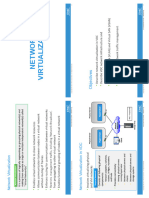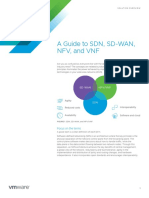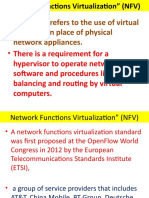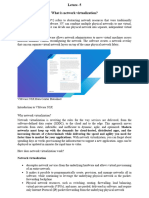0% found this document useful (0 votes)
8 views3 pagesNetwork Virtualization in Cloud Computing
Network virtualization is the process of logically grouping physical networks to operate as virtual networks, utilizing tools like physical switch OS and hypervisors. It offers advantages such as improved manageability, reduced capital expenditure, enhanced performance, and security, while also presenting challenges like increased complexity and upfront costs. Examples include Virtual LAN (VLAN), which facilitates efficient networking within virtual data centers.
Uploaded by
Vivekanandan VCopyright
© © All Rights Reserved
We take content rights seriously. If you suspect this is your content, claim it here.
Available Formats
Download as PDF, TXT or read online on Scribd
0% found this document useful (0 votes)
8 views3 pagesNetwork Virtualization in Cloud Computing
Network virtualization is the process of logically grouping physical networks to operate as virtual networks, utilizing tools like physical switch OS and hypervisors. It offers advantages such as improved manageability, reduced capital expenditure, enhanced performance, and security, while also presenting challenges like increased complexity and upfront costs. Examples include Virtual LAN (VLAN), which facilitates efficient networking within virtual data centers.
Uploaded by
Vivekanandan VCopyright
© © All Rights Reserved
We take content rights seriously. If you suspect this is your content, claim it here.
Available Formats
Download as PDF, TXT or read online on Scribd
/ 3























































































